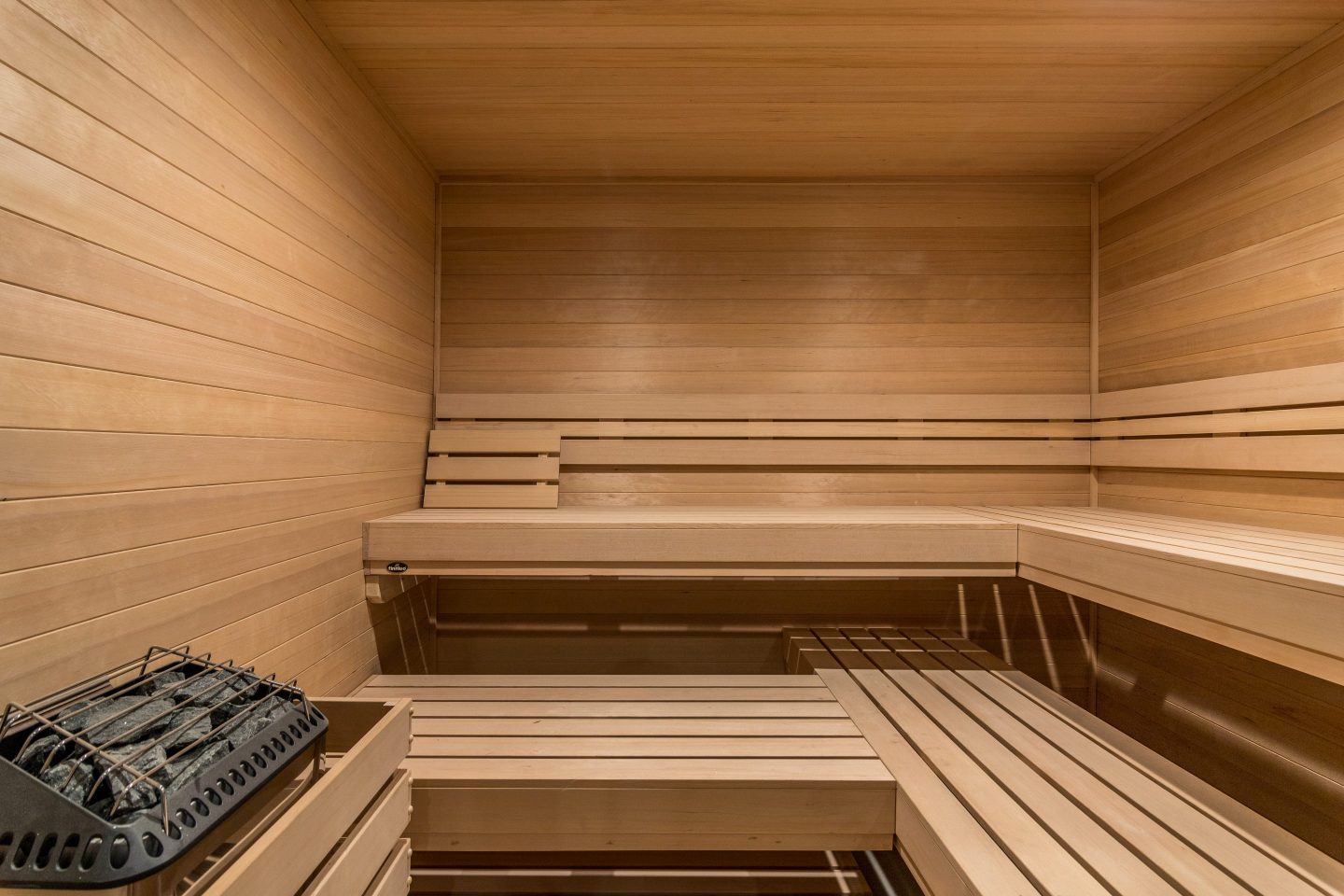California’s ultra-rich are building hidden mansions beneath LA
The wealthy are building down, but don’t call it a basement.

You’re lucky if you can afford a home in southern California at the moment, but the wealthy out do us all. Breathtaking vistas and mansions aren’t enough, they’ve got to have extraordinary basements as well.
Coined “iceberg homes” to indicate that a significant portion of living space is underground and hidden beneath the surface, these amenity-filled subterranean levels include wine cellars, home theaters, luxury gyms, and whatever else you can think of—including separate spaces for romance and intimacy. Some people even add in natural lightwells and skylights to flood the iceberg with California sunshine.
These homes were also a thing in London for years, too, among the city’s elite who couldn’t build up or out. Then, roughly five years ago, San Francisco Magazine published a story on iceberg homes. The author wrote: “In Palo Alto, as in many other affluent yet zoning-constrained enclaves around the Bay Area, homeowners are going underground…the once-lowly basement has become the hottest area in home design, resulting in a flotilla of square-footage-concealing iceberg houses.”
In Los Angeles, no one calls them icebergs. And they aren’t always called finished basements either, even if that’s basically what they are. Calling it a basement, “that’s considered kind of lowbrow,” Ernie Carswell, a luxury real estate agent based in Beverly Hills, said. “We call it the lower level.” The Wall Street Journal once labeled them McBasements, but the jury’s still out on whether the SoCal upper echelon will go for it.

Photo courtesy of Arzuman Brothers.
Carswell could be onto something because these luxe underground configurations don’t give off damp basement vibes, they’re much cooler and exemplary of Los Angeles opulence. Some house billiard rooms and wine caves, some have bowling alleys and movie theaters, some have gyms and saunas, some have bars, some have bedrooms if there are lightwells, and some are straight out of a “James Bond movie,” as Carswell put it. In all posh neighborhoods where multimillion dollar homes line the streets, “it’s luxurious to have a bunker,” Carswell said. Maybe they’re taking a page out of the Silicon Valley billionaire playbook.
It’s hard to say how much it costs to build a lavish basement, or whatever you want to call it, but it can be more than $1 million. Loosely speaking, if you were to build a 2,000 square foot lower level, it could come out to about $1.5 million, said Andrew Vaitkevicius, sales and acquisitions manager for Arzuman Brothers, a luxury homebuilder. Or they could cost even more, maybe a double-digit million figure, according to Chris Pozil, a senior project manager for McClean Design, a contemporary residential design firm. It’s because of how much work goes into them—the foundation, the finishing.
Vaitkevicius called the basements an almost “second house,” and they’re prevalent in neighborhoods such as Bel Air, Beverly Hills, the Sunset Strip, Malibu, Pacific Palisades, and Toluca Lake. Arzuman Brothers is building about 20 homes in Los Angeles at the moment, and about half will have basements that are fully fledged living spaces, he said. And in those neighborhoods, it makes sense because the sky’s the limit for how much you can sell for, more or less.

Photo courtesy of Arzuman Brothers.
Vaitkevicius mentioned two homes in Toluca Lake, a small neighborhood in the city, seemingly low-key, his company developed. Both homes were sold for almost $5 million; both had cushy basements. One was an almost 5,400 square foot house with eight bedrooms and five bathrooms; its basement had high ceilings, a bedroom, a bathroom, a movie theater with two rows of black leather reclining seats, and a blue felt pool table. The other, a 6,700 square foot house with five bedrooms and six bathrooms, had a movie theater in its basement, too. It happened to be sold to a Hollywood producer, who apparently hosts private premieres, Vaitkevicius said. Apart from that, the lower level had a makeshift health, wellness, and fitness center, with a sauna and massage table.

Photo courtesy of Arzuman Brothers.

Photo courtesy of Arzuman Brothers.
In a lot of the homes Pozil’s firm has designed, the basements are around half the size of the entire house. They’ve built basements with nightclubs bigger than some in the city, tennis and basketball courts, hidden sex rooms, and secret doors and spiral staircases leading to emergency bunkers, he said. And if its on “a really steep hillside, we can almost build into the hillside in a way that allows us to kind of have multi-story basements that from the street level,” Pozil said. “It looks like a typical one-or two-story home, but then if you see a drone shot looking at the hillside, it looks like a four-or five-story home.”
Building an iceberg home seems to have less to do with skirting zoning laws, and more to do with preserving stunning views; although Vaitkevicius and Pozil warned there is a limit to how big your house can be in the city. Still, California is somewhat well known for trying to get around housing policy when it can, maybe through turning a neighborhood into a historic district or protesting multifamily development. The state is the epicenter of the country’s housing crisis, and it’s been materializing for decades because of local control and an inability to build more homes. So you might have thought iceberg homes would be no different, and maybe they aren’t. But in some neighborhoods, “our limitations are all about views,” Carswell said. “We don’t want homes higher than two stories in hillside neighborhoods because then you’re going to block your uphill neighbor’s view of the ocean, or of the city, or of the Getty Museum.”
So the rich build down, and it’s easier. There aren’t many limitations on excavating, aside from one, which has to do with how much dirt can be removed from a single home, to ensure stability for any neighborhood’s foundation, Carswell said. And it can be about 200 truckloads of dirt that need to be hauled out, Vaitkevicius explained, but the dirt needs to be reinforced as it’s happening. Once you drill down, there are steel posts that have to be installed, and then concrete needs to be poured in. So it is expensive to excavate and it takes time, and that’s why these lower levels can be so exorbitant. But it can bump up your home value, which everyone tends to love.
Still, you won’t have more below ground than above ground, despite what calling it an iceberg home suggests. Carswell happens to be the president of his neighborhood’s homeowners association, which needs to approve all building plans from developers and homeowners, and lower levels can be no larger than what’s above ground where he is, and even then they typically trim it a bit more.
For him, the ritzy trend really began post-Great Financial Crisis, once developers returned to the city. They became “more and more glamorous and braggadocious,” he said. Before, it was “what we called California basements,” Carswell said. “It was just a hot water heater down there and electrical boards and rat traps.” But now, some of his affluent buyers want their homes to have lower levels; it’s on their checklist, he said.
For Vaitkevicius, it really began during the pandemic; people looked at homes differently, he said. “They want to have everything in the home,” Vaitkevicius said, “so you can have your own compound without needing to go out.”
It isn’t always about grandeur though—typical neighborhoods can have lower levels, too, Carswell said, but they’ll mostly be one or two bedrooms rather than entire living spaces fit for LA’s elite, per se.





